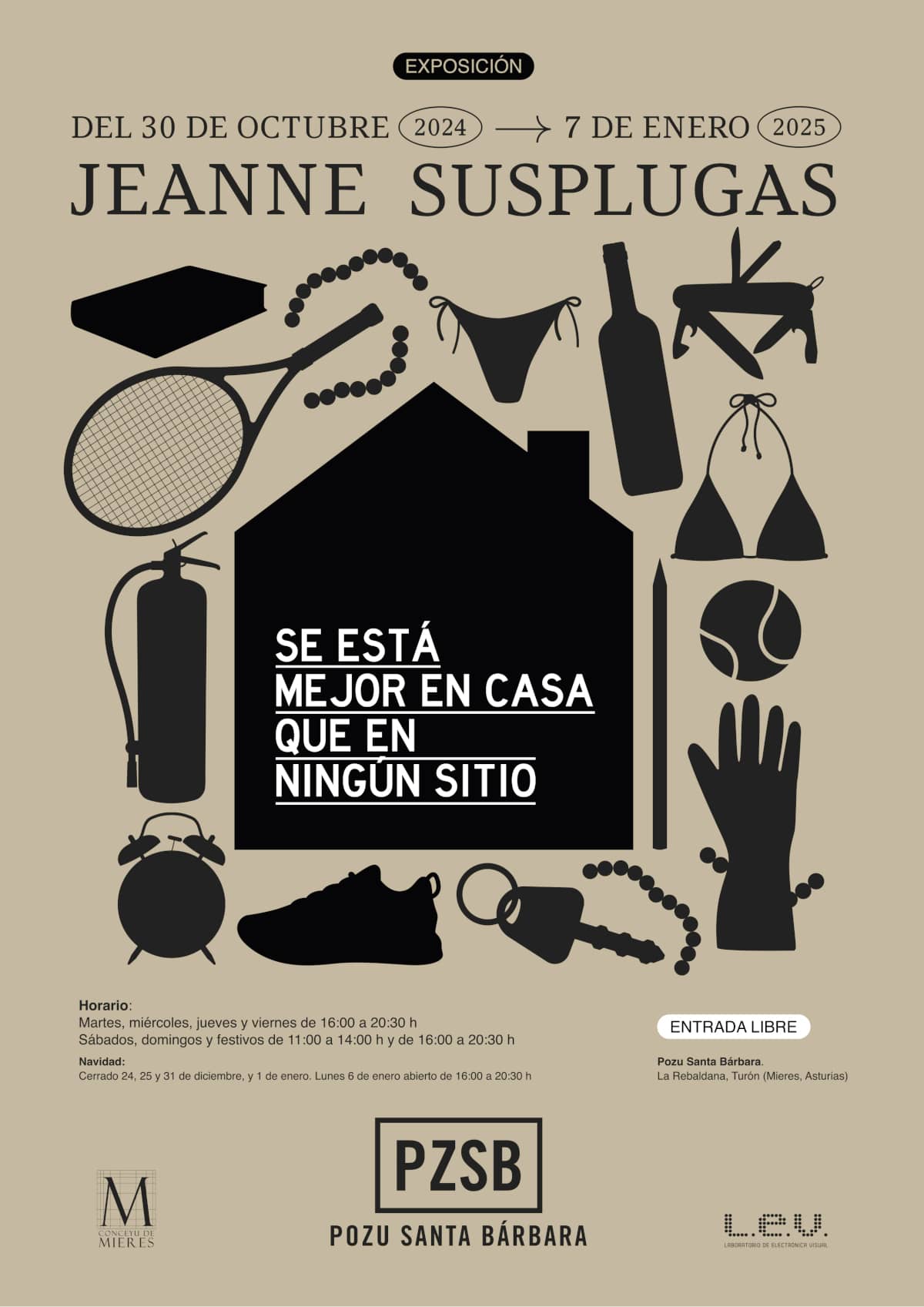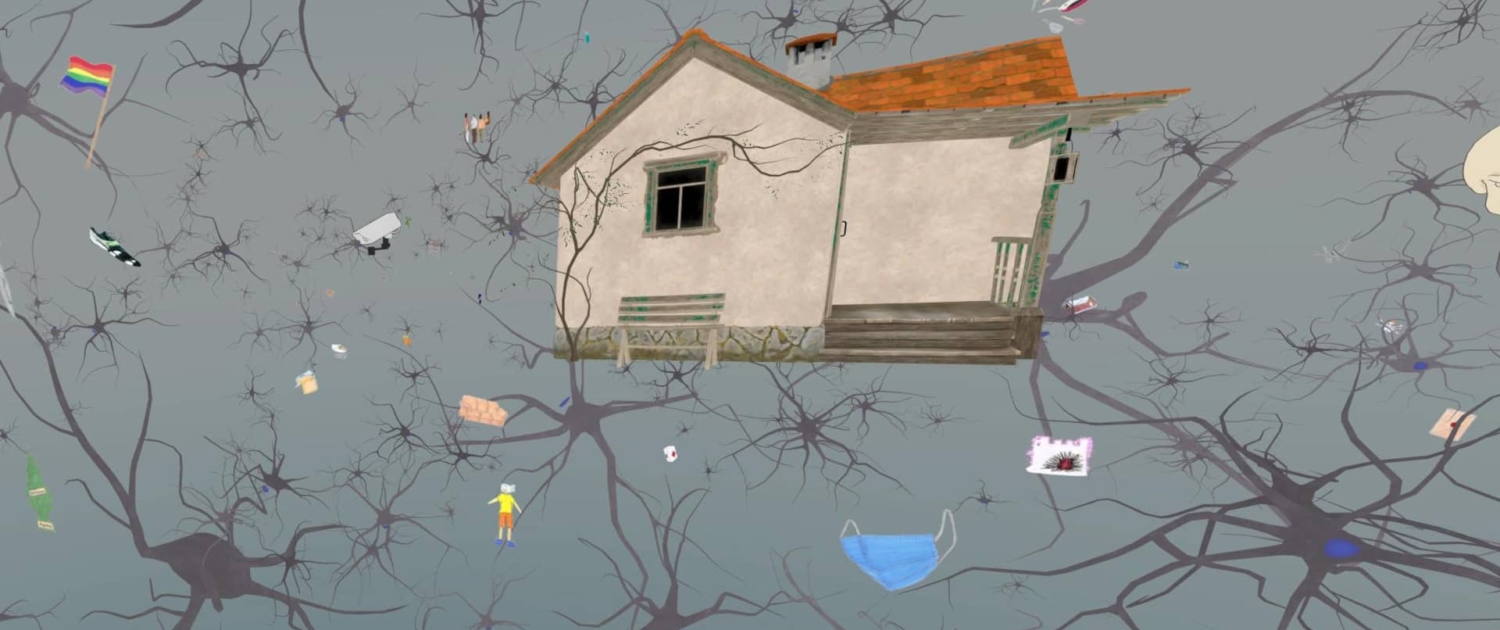Under the title Se está mejor en casa que en ningún sitio (There’s No Place Like Home), the exhibition opens its doors on October 30 at the Pozu Santa Bárbara in Mieres and can be visited until January 7, 2025, with free admission.
The project includes four key works by the French multidisciplinary artist Jeanne Susplugas, in which she explores the concept of home as a symbolic space that intertwines intimacy with the tensions of contemporary society.
Combining multiple sculptural installations, video, and a virtual reality experience, the selection of works offers an introspective journey through the critical and poetic universe of its creator.
Next Wednesday, October 30, The Center of Art Experiences Pozu Santa Bárbara at Mieres (Asturias) opens the exhibition There’s no place like home with four essential works by French artist Jeanne Susplugas to immerse ourselves in her introspective universe with a surreal touch, as critical as poetic. Powered by the Town Council’s Cultural Department, and curated by L.E.V. (Laboratorio de Electrónica Visual), this new exhibition explores the notion of ‘home’ as a symbolic space where intimacy and contemporary tensions intertwine.
Multidisciplinary artist Jeanne Susplugas employs an aesthetic in her work that, at first glance, appears captivating and even naïve, drawing in those who enjoy her work because of its vibrant colors and well-defined shapes. But behind this superficial appearance lurks a disturbing depth. Susplugas uses the artistic medium to transform it into a powerful way of communication, challenging the public’s perception and forcing them to confront their own concerns and emotions. Using this duality, and often adding humor, cynicism, and irony, the artist encourages us to engage in a thoughtful reflection that transforms the aesthetic experience into a profound examination of human intricacies.
Topics such as mental health, emotional exhaustion, isolation, confinement, and the medicalization of society unfold in this exhibition proposal presenting them through a narrative that shifts between the familiar and the bewildering. The exhibition explores how individuals connect with domestic space through a sensorial and deeply immersive journey, featuring striking works in various formats ranging from big sculptural installations to video and virtual reality pieces.
The first work shown in this exhibition, There’s No Place Like Home, plays with the iconic sentence from The Wizard of Oz that gives this exhibition its title to question the notion of home as a shelter. With this video installation, where a woman repeatedly asserts the phrase from the film, Susplugas deconstructs the romantic idea of home as a place of safety, and instead tells us the domestic space could be an emotional trap, where internal tensions are amplified and routine becomes claustrophobic. As if reciting a mantra on loop, in which the repetition of words is more disconcerting than comforting, the work reflects how confinement can turn into a hostile environment for the mind.
The sculptural installation Flying House, based on a series of illustrations by the artist, represents a house suspended in the air which multiple objects hanging to symbolize the instability of something that should offer us the opposite: once again, home. Defying the laws of gravity, this installation plays with the notion of the domestic shelter as a fragile, fluctuating, and illusory concept, inviting the audience to rethink the emotional and psychological connections they create with their daily environment and the material objects they own. The objects that emerge from the hanging house materialize the reactions of various people about what they would choose to take with them if they were forced to leave their home in a hurry, aware that they might never return. Among them, you can find everything from books, computers, practical tools or different kinds of weapons.
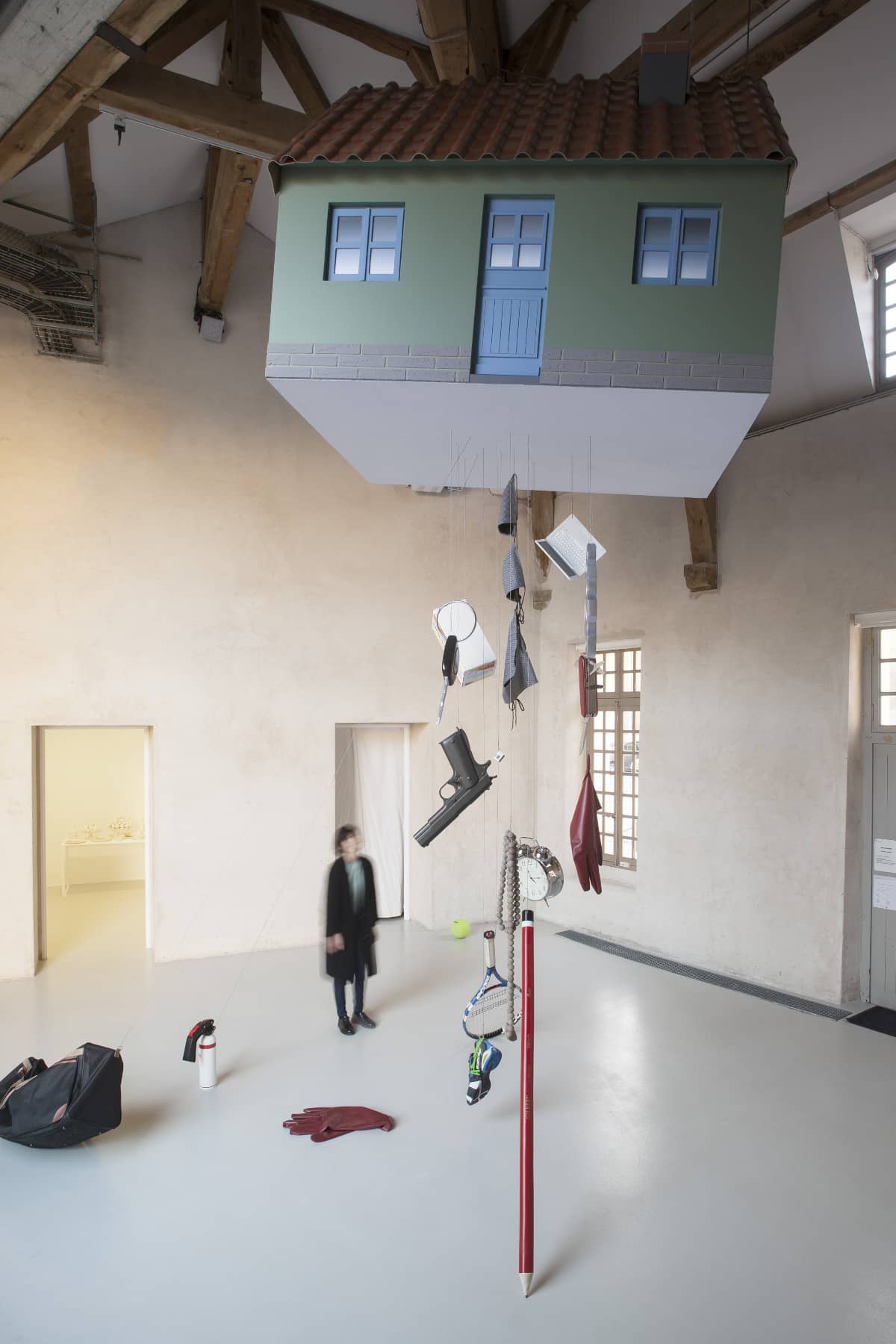
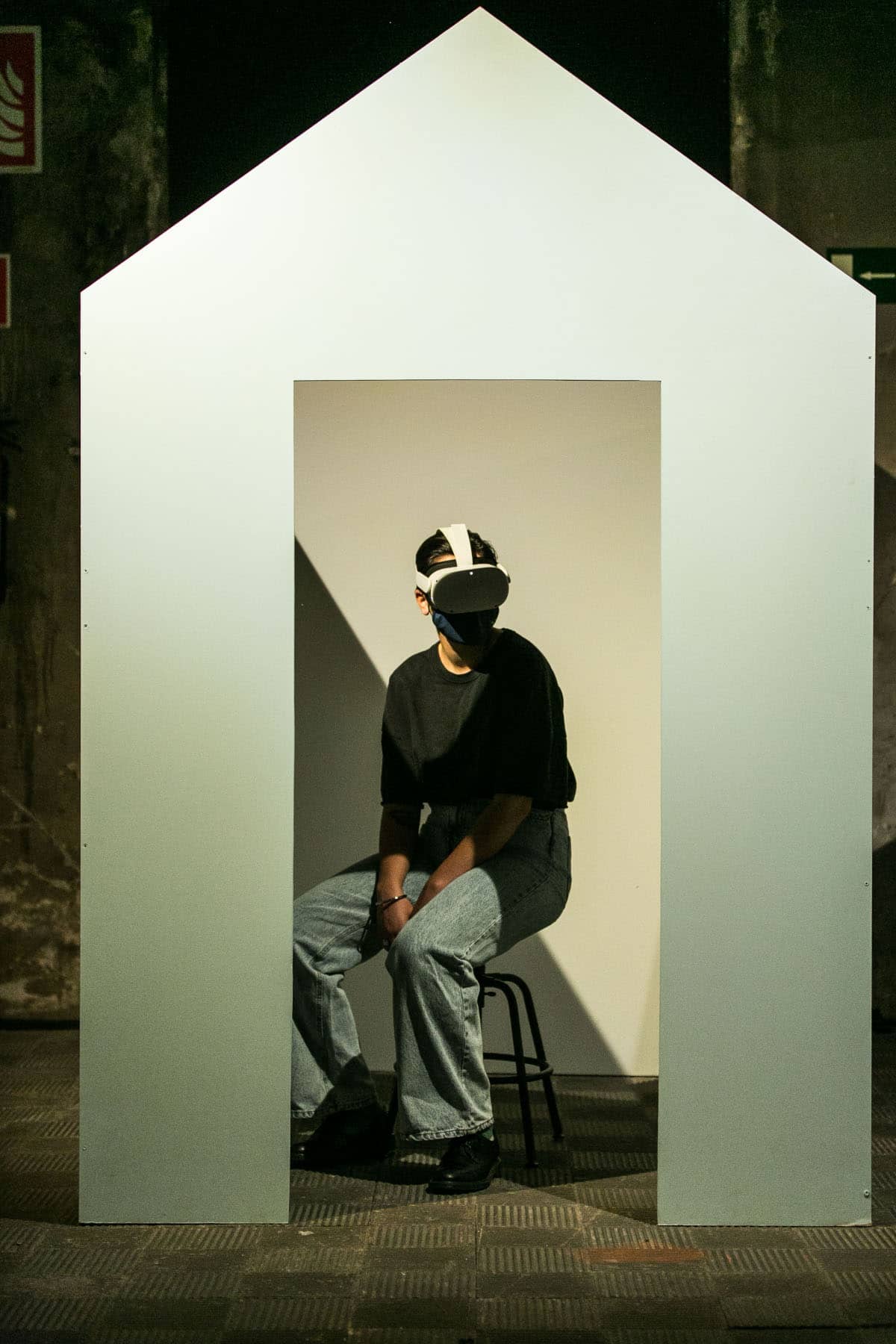
The exhibition also includes the project I Will Sleep When I’m Dead, consisting of six sculptures and a virtual reality experience that immerses the viewer in a journey through the infinite labyrinth of the human mind. The work borrows its title from a song by the popular musician Bon Jovi and creates an intimate and chaotic journey where concepts and emotions seem to flow uncontrollably. It is a visual navigation between neurons and synapses, between thoughts materialized in the form of pictograms, which the audience can explore at will. The large-scale sculptures that accompany this intense, almost psychoanalytic immersive experience—unique for each person—represent some of the digital and pictorial elements the user will encounter along their path when they put on the virtual reality headset.
These three projects will take up the whole space of the former Compressor Room of the Santa Bárbara mine, while the old Ventilation Room will host the fourth and final piece of the exhibition: La Maison Malade (The sick house). This installation is a physical representation of the home as a sick space. It features a closed and claustrophobic room where the ceiling, floor, and walls are covered with piles of medicine boxes. A direct critique of the excessive medicalization of everyday Western life, showing how diseases generated by a dysfunctional society can invade the individual’s most intimate spaces, disconnecting body and mind.
To sum up, the exhibition There’s no place like home manages to capture with great intensity the tensions associated with home, which, while being an essential refuge for humans, can also convey feelings of discomfort. With an aesthetic that fluctuates between the visually appealing and the disturbing, and through an innovative fusion of technological and artistic media, Jeanne Susplugas transforms Pozu Santa Bárbara into a critical space for emotional reflection, a mirror of the concerns and realities of the contemporary world.
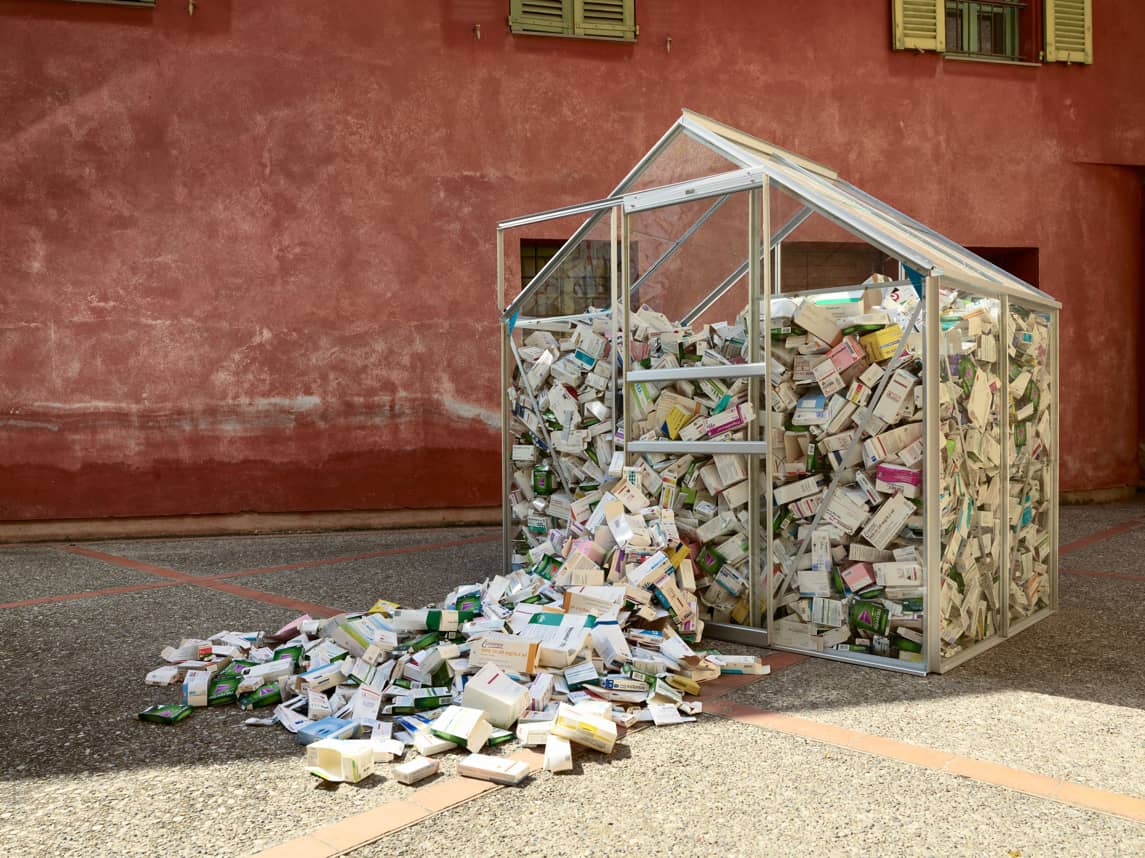
About Jeanne Susplugas
Born in Montpellier and residing in Paris, the multidisciplinary contemporary artist Jeanne Susplugas uses her work to challenge all possible forms and strategies of confinement, exploring the relationships that the individual establishes with themselves, with others, and with their environment.. Throughout her career, she has explored the intersection of art, literature, and science, integrating these influences to enrich her artistic practice. The various media and disciplines she employs become vehicles that shape her singular aesthetic, moving between the disturbing and the comforting, between unease and calm, between loneliness and complicity. Her work has been widely exhibited in institutions such as KW in Berlin, the Villa Medici in Rome, the Palazzo delle Papesse in Siena, the Palais de Tokyo in Paris, Le Fresnoy National Studio, the Museum of Modern Art in Saint-Étienne, and the Museum of Grenoble. She has also participated in events such as Dublin Contemporary, the Alexandria Biennale, the Shanghai Biennale, and Nuit Blanche in Paris; and her films have been shown at festivals such as Hors Pistes (Centre Pompidou, Paris), the Locarno International Film Festival, the Miami International Film Festival, Les Instants Vidéos in Marseille, and Les Rencontres Internationales Paris/Berlin/Madrid.
Pozu Santa Bárbara, La Rebaldana, Turón (Mieres, Asturias)
From October 30, 2024 to January 7, 2025
Arranged by Cultural Department of Mieres’ Town Council
Curated by L.E.V. Laboratorio de Electrónica Visual
Useful information
Schedule: Tuesdays, Wednesdays, Thursdays and Fridays from 16:00 to 20:30 h. Saturdays, Sundays and holidays, from 11:00 to 14:00 h. and from 16:00 to 20:30 h. *Closed December 24, 25, and 31, January 1. Monday, January 6 open from 16:00 to 20:30 h.
Free entrance
